This article looks at the various options open to PDA, handheld and smartphone users that want to connect and sync their devices to an Apple Mac desktop or laptop.
NOTE: This article was written in 2005 for Palmtop User Magazine and is reprinted with their permission. Note that some of the content in this article is now out-of-date and was written prior to the release of the Apple iPhone.
It is reproduced as-is, in the hope that some Mac users may find the content useful.
The Apple Connection
If you’re an Apple Macintosh user then you’re probably acutely aware that some PDA platforms don’t support the Mac at all, and others do so only to a limited degree. Whether you’ve already chosen your handheld platform or are looking to buy whatever works best with Apple computers, here’s a look the relative Mac-friendliness of each type of PDA, and at some of the best applications that incorporate Macintosh as well as PC support.
Palm OS and the Mac
As the only PDA platform with fully integrated Mac support, Palm OS is the obvious choice for Apple users. Although PalmSource has announced that it will discontinue its own Mac desktop software with the advent of Cobalt (Palm OS 6) devices later this year, Mark/Space has already stepped into the breach with its own synchronization solution, The Missing Sync.
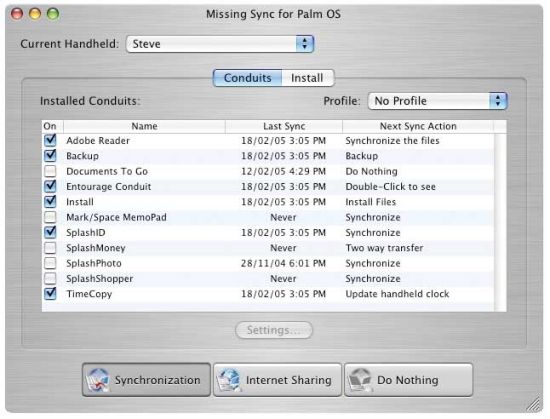
This software has so much to offer beyond the existing Palm Desktop that we’d recommend it to all Mac-based Palm users. It adds full support for synchronizing with the iLife suite, which includes iTunes and iPhoto as well as iCal and Address Book. If you’ve got Bluetooth or Wi-Fi (i.e. Apple AirPort) on both your Mac and Palm handheld, you can sync wirelessly and even share your Mac’s Internet connection. The Missing Sync will also ‘mount’ any SD storage card in your handheld straight onto the desktop, so you can copy files directly.
If you’re using a Tapwave Zodiac or an old Sony Clie, The Missing Sync is your only option for Mac connectivity, as these models don’t come with Macintosh support as standard.
PRC vs. EXE
Regardless of whether you’re using the standard Palm Desktop or The Missing Sync, installing Palm OS software via your Mac is just as easy as it is with a PC, with a quick double-click on the relevant PRC or PDB files queuing them up ready for installation at the next HotSync.
The only exception to this is when a software developer only offers a PC ‘.EXE’ file for installation. This is usually done in cases where the software has a PC desktop companion application that will synchronize with the Palm application, but a few Palm developers use EXE files for no obvious good reason. If that’s the case, your easiest option is to contact the software company and ask them to provide the basic PRC/PDB file(s) without the PC installation program.
Microsoft’s normally excellent Virtual PC application may seem like a good option for working with EXE files for your Palm, but unfortunately we’ve been unable to persuade either the latest version (7) or the earlier version 6 to make a successful HotSync connection with the latest Palm OS devices. Microsoft has confirmed this problem, but do not as yet have a solution. Interestingly, Palm HotSyncs worked perfectly with version 5 of Virtual PC, at least when running on an old G3 Power Mac. A few users have reported success using more recent versions of the software, but we’ve had no success on any of our G4 or G5 test machines.
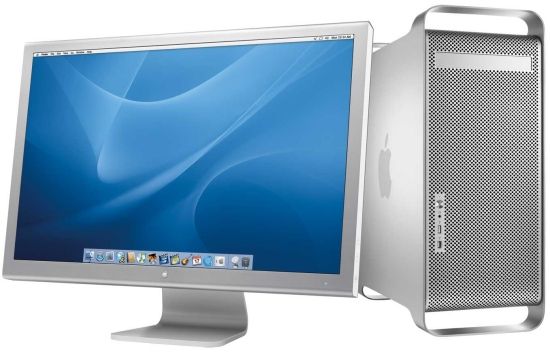
Apple Mac G5
Conduits and companions
Discounting the few occasions when Palm software is supplied in EXE format, the only major Mac compatibility issue relates to desktop companion applications. Many programs such as word processors, spreadsheets, databases, outliners, personal finance packages, etc. come with a (often free) Windows desktop application that either offers a means to enter and edit the program’s data on the desktop, or to import desktop files into the handheld application.
The vast majority of these are PC-only, so Mac users are left either to manage without the desktop application entirely, or to seek out one of the few programs that offer full Mac support.
Mac-friendly Palm software
For keeping your Microsoft Word, Excel and PowerPoint documents in perfect sync between your Mac and a Palm OS PDA, Documents To Go is the logical solution, with a full Mac desktop application and synchronization conduit to make the process just as easy as it is for PC users. Alternatively, the excellent WordSmith word processor has a Mac conduit.
For getting video content from your Mac to a Palm, Kinoma Producer handles almost all common formats, and audio too, including unencrypted AAC, a feature currently unique to Kinoma.
If you need to share Mac database files with your Palm handheld, FileMaker Mobile works well with a few caveats. HandBase has a Mac/FileMaker conduit, but this is OS 9-only.
The Adobe Reader software for viewing PDF files is free to download and comes with a Mac desktop companion for producing optimised files for the handheld, though the handheld viewer for Palm OS is very limited in functionality, regardless of whether you’re PC or Macintosh-based.
One of the longstanding champions of Mac compatibility, SplashData offers a suite of powerful applications with full Mac desktop components and synchronization conduits. SplashData’s SplashID is an excellent solution for managing your personal passwords, PIN numbers, etc, with SplashPhoto doing a similarly good job handling your photographic images, complete with the ability to crop and otherwise tweak your photos prior to transferring them to the PDA.
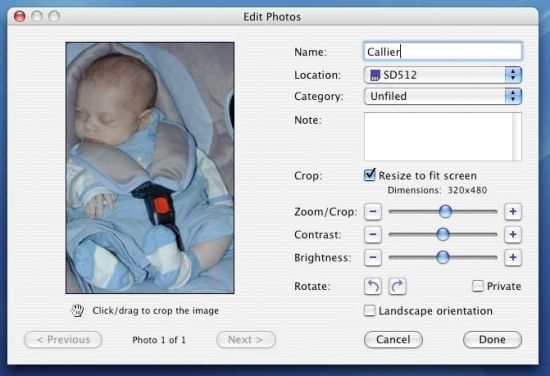
SplashShopper is a capable shopping list manager, again with a full desktop companion application. The SplashMoney personal finance application lacks a desktop companion per se, but its HotSync conduit at least allows you to import and export Quicken (QIF) files, and to export transactions in CSV format for embellishment in your desktop spreadsheet application.
Other notable Mac-friendly applications include the powerful Shadow Plan hierarchical outliner and project planner, which comes with a decent Mac desktop editor. Along broadly similar lines, Life Balance has a desktop application too, but is geared more towards to do items and personal goal management.
For keeping track of business expenses, ExpensePlus is available in a Mac version that integrates with Microsoft Excel.
iSilo is a great way to get web page content onto your Palm handheld, and its iSiloX desktop client performs all the necessary file conversion natively under Mac OS X.
Email workarounds
There’s no current Palm-based email application with a Macintosh conduit, perhaps the biggest bugbear for Apple users. The nearest thing to a satisfactory solution is to use one of the many Palm OS email clients to download messages directly to your handheld (either via a Bluetooth or infrared connection to a suitable mobile phone, or using The Missing Sync to share your Mac’s Internet connection). If you then use the email software’s option to leave downloaded messages on the server, they will be retrieved by your Mac the next time it connects, so at least you’ll always have copies of every email on your desktop.
Pocket PC and the Mac
If you wish to use a Pocket PC with your Macintosh, we’ve found all versions of Virtual PC to work well with Microsoft’s ActiveSync synchronization software, having used it with version 5, 6 and 7, running with Windows 98, Me and XP Professional.
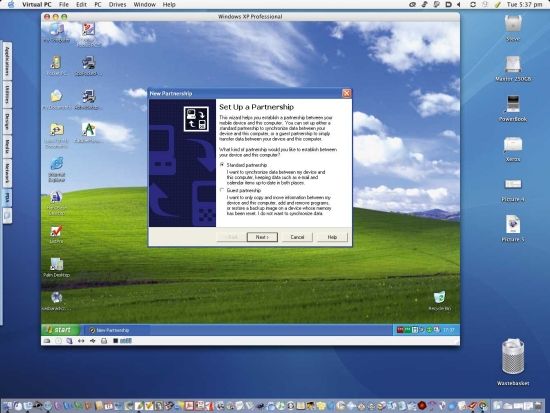
Running everything within Windows makes it easy to install and remove software, perform full backups and synchronize files, all exactly as you would with a PC, limited only by the fact that on anything less than a G5 Mac, the Virtual PC software can be painfully slow, particularly if used to run a modern and sophisticated version of the Windows operating system, such as XP.
Although Pocket Word, Pocket Excel and a few other file types can be copied between the Mac and PC environments simply by dragging them between the two desktops on screen and then into the Pocket PC’s ‘My Documents’ folder, this leaves the problem of how to keep your contacts, appointments, tasks and notes in sync with the Mac, as the Pocket PC PIM suite will only sync directly with Microsoft Outlook.
Although a copy of Outlook is supplied with every Pocket PC, and works perfectly under Virtual PC if desired, you’ve then got no means to keep your Pocket PC in sync with the iLife suite or Entourage.
PocketMac Pro
As an alternative to Virtual PC, the third party PocketMac Pro looks like a great solution to keep your Pocket PC in sync without resorting to Windows. The latest version of the software (3.43) claims to be able to sync contacts, tasks and appointments with either the built-in Mac iLife applications or Microsoft Entourage, and to synchronize iPhoto images, iTunes playlists, unread messages from your Mail or Entourage inboxes, and web bookmarks from Safari, Internet Explorer or OmniWeb.
Equally impressive, the Pocket PC’s ‘My Documents’ folder appears on the Mac desktop as a mounted volume, together with any memory cards inserted into the Pocket PC, and even the flash memory store if your device has one. This makes it easy to drag files between Mac and handheld.
In practice, extensive testing of PocketMac Pro on a dual 1.8GHz G5 PowerMac (running OS X 10.3.7) proved to be little short of a nightmare. When syncing with Entourage, appointments, were copied across successfully in both directions, but we were unable to coax tasks from Entourage into copying across to the Pocket PC at any stage. Syncing of appointments and contacts generally worked well, except that any data in custom Entourage fields (such as phone numbers relabeled as ‘Main;’ rather than ‘Work:’, ‘Home:’, etc.) were simply ignored, with no warning or attempt to re-map the numbers to vacant fields. Also, any attempt to remove appointments on the Pocket PC failed, as they would simply be infuriatingly re-inserted at the next sync.
Although a separate utility is now provided to synchronize Entourage Notes, a feature absent from earlier versions of PocketMac, this simply froze on launch, requiring a Force Quit from within OS X.
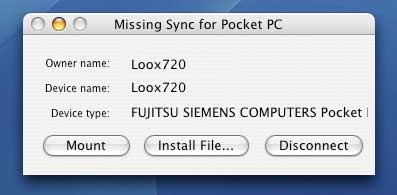
CAB installation
To alleviate the need to use Virtual PC every time you have to run PC-based EXE files to install software to the Pocket PC, PocketMac Pro attempts to delve into EXE files, dig out the embedded CAB file (the part which gets installed onto the handheld) and install everything automatically for you. In reality, this practice often failed, cheerfully presenting a dialog saying "Did the CAB file appear to install on the Pocket PC correctly?", but offering no suggestions when the answer was "no".
Some software developers are happy to supply CAB files directly rather than full-blown EXE-based installers, and PocketMac worked well with these, though it lacks the option to install to storage card or flash memory rather than internal RAM.
Resorting to Virtual PC to install software from time to time wouldn’t be such an odious task (assuming that you already own a copy of Virtual PC), except that, on our test machine, the PocketMac USB drivers conflicted with those for Virtual PC, disabling ActiveSync entirely. Although this is (apparently) due to incorrect behaviour on the part of Virtual PC rather than PocketMac, the only solution is to go into OS X’s Terminal application and enter a few lines of code into the command line interface, which must be done both before and after using Virtual PC. PocketMac’s authors claim that this will be made easier at the next major release, but for now this combination of problems and limitations makes the software very hard to recommend.
PocketMac has no backup facility of its own, instead relying on a companion PocketMacBackup product. We found serious problems with this too, and although it comes with the claim to be able back up storage cards as well as internal memory (a feature missing from even the Windows-native ActiveSync), any backups we attempted managed to process only half the files and folders present. In addition, there is no feature for incremental backups, requiring a backup of each entire volume every time.
In the case of a 128MB Pocket PC with a 1GB SD card, this was a process that took well over an hour to complete.
Missing Sync for Pocket PC
An alternative to PocketMac, Pocket PC users also have Mark/Space’s version of The Missing Sync for Windows-powered handhelds. Though this has nowhere near as much functionality as the Palm OS version, we found it to perform much more satisfactorily than PocketMac.
The Pocket PC version of Missing Sync not only allows reliable syncing with iCal and Address Book, but can be used for easy transfer of iTunes and iPhoto files too. By allowing you to mount your Pocket PC (complete with any storage cards) as a separate volume on the Mac desktop, it’s easy to browse the device and manually copy files back and forth as desired.
Rather than trying to extract CAB files from PC executables, The Missing Sync has a simple facility to install CAB files directly, which it can do to storage cards or flash memory as well as to the default internal memory. The next major revision of The Missing Sync for Pocket PC promises to incorporate Entourage syncing into the product, the most significant omission from the current version.
Pocket PC summary
So, is it realistic to use a Pocket PC with your Mac? Discounting PocketMac, The Missing Sync is a satisfactory means of keeping your iLife suite in step with your Pocket PC and for copying files across, but as there’s no option to convert Pocket Word and Pocket Excel files into standard Word and Excel formats, you’re required to save each of your Pocket PC files into .doc and .xls format before copying them to a Mac, which is tedious. Also, although some developers are happy to supply software as CAB files, this is by no means common, meaning that you must purchase a copy of Virtual PC if you’re to enjoy real freedom when it comes to what Pocket PC software you purchase.
Though many Mac users will baulk at the idea of spending any significant amount of time in a Windows Environment, Virtual PC (at least in conjunction with Pocket PC handhelds) performs just like the ‘real’ Windows, so removes all compatibility issues at a stroke. With it, you’ll be able to install any Windows-only Pocket PC software, perform ActiveSync backups, synchronize with PC-based companion applications and generally use the handheld just as a PC user would.
In conjunction with The Missing Sync for handling PIM synchronization, this forms a relatively convenient overall solution.
Symbian and Mac OS
Unfortunately, with no third parties (so far) having stepped in to fill the gap in Mac compatibility for Symbian-powered smartphones, Symbian users are limited in their interaction with a Macintosh.
If you’re prepared to work entirely within Virtual PC, most Symbian devices can make the physical connection, but be sure to at least try out the demo version of Virtual PC (available from www.microsoft.com) with your particular device to ensure that you’re able to connect successfully and everything works as it should. The problem with a Virtual PC-only approach is that you won’t be able to synchronize your Mac-based PIM suite with the smartphone.
Without Virtual PC, you can currently use iSync to synchronize your Address Book and iCal with most UIQ and Series 60 devices. See www.apple.com/isync/devices.html for a list of currently supported models. Note that some will synchronize only via Bluetooth though, so you may need to purchase a Bluetooth module if it isn’t already integral to your Mac.
For basic SIS file-based program installation, and even for copying files to and from the smartphone, a standard card reader can be used in conjunction with your SD, MMC or Memory Stick, or of course infrared or Bluetooth.
Entourage or iLife?
If you’re using Microsoft Entourage rather than Apple’s own iLife PIM suite and there’s no option to sync Entourage directly with your particular PDA, e2Sync makes it possible to do so by using Address Book and iCal as intermediaries.
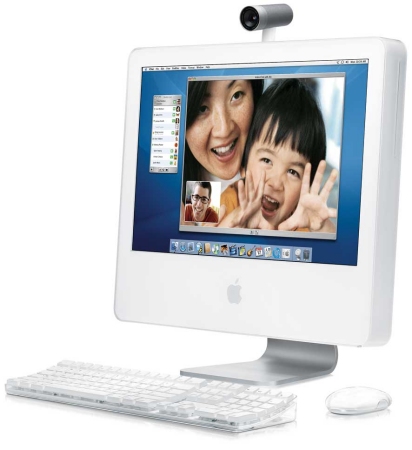
Need some help?
If you need help with connecting your PDA, or with data conversion – try these links:
- Handheld Computing forum – Got a question on PDAs, handhelds or smartphones? Try here
- PDA Data conversion – Information on converting data from a handheld device
- Moving your data – Data conversion article originally published in Palmtop User
- Repligo
– Great software for document viewing and conversion on Pocket PC,
Palm OS and Symbian smartphones
Sorry – but here at FileSaveAs, we’re not Mac users – so don’t email us for help – instead, ask in our Handheld Computing forum.
Need help with a format not listed? Ask a question or discuss file conversion
in our PDA discussion forum

